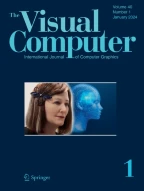Avoid common mistakes on your manuscript.
The following special issue is dedicated to game technologies for serious applications. It is based on the best papers received for the Seventh International Conference on Virtual Worlds and Games for Serious Applications (VS-Games 2015) which took place in Skövde, Sweden, from 16 to 18 September 2015. The conference had 48 submissions from which these nine papers were chosen in terms of both their quality and their potential for a strong journal paper. The papers were revised significantly, and all had content added. They were subsequently reviewed by an international panel of experts whose comments benefited the finally accepted versions over two rounds of additional reviews.
The articles in this special issue reflect the broad nature of research in the serious games domain. The papers range from the design of video games to help with serious applications, the use of novel input devices and brain interaction to dealing with emotions and multisensory environments.
Asadipour et al. [1] present a novel glove interface that detects pressure sensitivity for the use in fine motor training skills for applications such as palpation training for student doctors. They present a video game in the endless-runner genre which uses the input glove to control an on-screen avatar. Results demonstrate a significant increase in sensitivity for participant performance in an unrelated task for those trained via the video game compared to a control group.
Balducci et al. [2] evaluated the affective design of video game scenarios based on EEG. Two game levels are developed and evaluated via a novel methodology with a number of participants. Results demonstrate the effectiveness of the proposed method.
Brich et al. [3] present a novel video game based on the tower defence genre to impart concepts of liver function. The proposed system also serves as a customisable tool which can be used for exploring different settings within the game. A study was conducted to analyse perceived control, enjoyment and frustration of the participants across different difficulty levels.
Chalás et al. [4] present a method for automatically generating face composites. This finds its application in virtual environments where large crowds of virtual avatars may be visible and provides a straightforward manner of generating different faces via compositing facial parts from 3D scans. Studies on the method with 104 participants were performed and demonstrate the suitability of the approach.
Dingli et al. [5] develop a webcam-based method for the detection of emotional states in players. While traditional methods may be intrusive or can distract users, this solution is inexpensive and provides results which are reported to be accurate up to 76%.
Kruijff et al. [6] investigate the effect of multisensory virtual environments on users. This work introduces new methods for potentially evaluating such effects. A pilot study explored the reaction of participants to different virtual scenarios, each consisting of different sensory modalities and capturing the emotions that were expressed by the participants.
Lelardeux et al. [7] present a multiplayer learning environment to help improve situational team awareness. The causes of accidents are frequently attributed to human errors and miscommunication among individuals in a team. This work presents a virtual environment where multiple players can participate via information sharing. A study with group participation was successfully conducted within a virtual operating theatre.
Liang et al. [8] developed a system that facilitates storytelling with the use of interactive gesture recognition. Such gesture control can be used to manipulate virtual puppets that provide further aid to story narration. Initial findings demonstrate positive results.
Vourvopoulos et al. [9] investigated the effect that prior gaming experience has at the brain pattern modulation and if experienced gamers can have better performance in BCI training due to enhanced sensorimotor learning derived from gaming. A pilot study was conducted with electroencephalographic (EEG) data analysis. Results show that a strong gaming profile not only could possibly enhance the performance in BCI training, but can also increase EEG rhythm activity.
References
Asadipour, A., Debattista, K., Chalmers, A.: Visuohaptic augmented feedback for enhancing motor skills acquisition. Vis. Comput. (2016). doi:10.1007/s00371-016-1275-3
Balducci, F., Grana, C., Cucchiara, R.: Affective level design for a role-playing videogame evaluated by a brain-computer interface and machine learning methods. Vis. Comput. (2016). doi:10.1007/s00371-016-1320-2
Brich, J., Rogers, K., Frommel, J., Weidhaas, M., Brückner, A., Mirabile, S., Dorn, T., Riemer, V., Schrader C., Weber, M.: LiverDefense: how to employ a tower defense game as a customisable research tool. Vis. Comput. (2016). doi:10.1007/s00371-016-1314-0
Chalás, I., Urbanová, P., Juřík, V., Ferková, Z., Jandová, M., Sochor, J., Kozlíková, B.: Generating various composite human faces from real 3D facial images. Vis. Comput. (2016). doi:10.1007/s00371-016-1277-1
Dingli, A., Giordimaina, A.: Webcam-based detection of emotional states. Vis. Comput. (2016). doi:10.1007/s00371-016-1309-x
Kruijff, E., Marquardt, A., Trepkowski, C., Schild, J., Hinkenjann, A.: Designed emotions: challenges and potential methodologies for improving multisensory cues to enhance user engagement in immersive systems. Vis. Comput. (2016). doi:10.1007/s00371-016-1294-0
Lelardeux, P.C., Panzoli, D., Lubrano, V., Minville, V., Lagarrigue, P., Jessel, J.-P.: Communication system and team situation awareness in a multiplayer real-time learning environment: application to a virtual operating room. Vis. Comput. Prog. (2016). doi:10.1007/s00371-016-1280-6
Liang, H., Chang, J., Kazmi, I.K., Zhang, J.J., Jiao, P.: Hand gesture-based interactive puppetry system to assist storytelling for children. (2016). Vis. Comput. doi:10.1007/s00371-016-1272-6
Vourvopoulos, A., Bermudez i Badia, S., Liarokapis, F.: EEG correlates of video game experience and user profile in motor-imagery-based brain-computer interaction. Vis. Comput. (2016). doi:10.1007/s00371-016-1304-2
Author information
Authors and Affiliations
Corresponding author
Rights and permissions
About this article
Cite this article
Debattista, K., Liarokapis, F. Preface to the special issue on VS-Games 2015. Vis Comput 33, 399–400 (2017). https://doi.org/10.1007/s00371-017-1351-3
Published:
Issue Date:
DOI: https://doi.org/10.1007/s00371-017-1351-3
